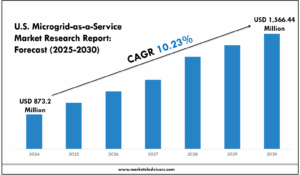
Cables might seem straightforward, but the journey from raw materials to finished product often spans the globe. Copper from South America, polymers from Asia, manufacturing in the UAE, and customers in Europe – it’s a truly international affair. This global interconnectedness makes the cable manufacturing industry highly sensitive to the shifting sands of global trade policies. Tariffs, trade deals, sanctions, and political tensions aren’t just headlines; they directly impact costs, sourcing strategies, supply chain resilience, and ultimately, the price and availability of cables worldwide.
What Are We Talking About? Key Trade Policy Elements
Several factors come into play:
- Tariffs: These are taxes imposed by a country on imported goods (or sometimes exported goods). They directly increase the cost of bringing materials in or sending finished products out.
- Trade Agreements: Pacts between two or more countries that set rules for trade. They can reduce or eliminate tariffs, standardize regulations, and simplify customs procedures (e.g., Free Trade Agreements – FTAs), or conversely, restrict trade.
- Quotas: Limits on the quantity of a specific good that can be imported during a certain period.
- Subsidies: Financial support from a government to domestic industries, potentially making their products cheaper and impacting international competitiveness.
- Sanctions & Embargoes: Political tools used to restrict or ban trade with specific countries, often disrupting access to materials or markets.
- Regulations & Standards: Non-tariff barriers like differing safety standards, environmental regulations, or labeling requirements that can make exporting to certain markets complex and costly.
The Ripple Effect: How Trade Policies Impact Cable Makers
These policies create waves throughout the cable manufacturing ecosystem:
1. The Cost Equation: Tariffs Bite
- Raw Material Costs: Tariffs on essential inputs like copper, aluminum, or specialized polymers directly increase production costs for manufacturers. These costs often get passed down the chain, potentially leading to higher prices for end-users.
- Component Costs: Tariffs on imported components (connectors, specific shielding materials) add another layer of expense.
- Finished Goods Tariffs: Taxes levied on exported cables can make products less competitive in foreign markets, discouraging international sales or forcing price increases.
2. Supply Chain Strategy: Hedging Bets
- Sourcing Diversification: Facing tariffs or instability in one region, manufacturers are increasingly looking to diversify their sources for critical materials. Relying on a single country becomes risky. This might involve seeking out reliable quality cable suppliers in uae or exploring options in other regions less affected by specific trade disputes.
- Regionalization/Nearshoring: Some companies shift production closer to their key markets (“nearshoring”) or establish regional hubs to reduce reliance on long, complex global supply chains vulnerable to trade disruptions and high shipping costs. Having strong local cable manufacturers in uae benefits regional customers by potentially shortening lead times and mitigating some global trade risks.
- Inventory Management: Companies might hold larger inventories of critical materials as a buffer against potential supply disruptions caused by sudden policy changes or shipping delays, though this ties up capital.
3. Market Access: Opening and Closing Doors
- Favorable Trade Agreements: Countries with beneficial FTAs offer manufacturers easier access to partner markets with lower tariffs and streamlined customs, providing a significant competitive advantage.
- Trade Barriers: High tariffs, complex regulations, or political tensions can effectively close off potentially lucrative markets, forcing companies to redirect sales efforts.
- Compliance Burden: Navigating different regulations and standards in various export markets requires significant administrative effort and cost.
4. Geopolitical Shockwaves
- Sanctions & Conflicts: Events like sanctions on major raw material producers (e.g., impacting copper or aluminum supply) or geopolitical conflicts disrupting shipping routes (e.g., in the Red Sea or impacting energy prices) can have immediate and severe impacts on material availability and logistics costs.
- Uncertainty: Perhaps the biggest challenge is uncertainty. Constantly shifting trade policies make long-term planning difficult and investment decisions riskier.
Adapting to the Shifting Landscape
Cable manufacturers aren’t just passively accepting these challenges; they’re actively adapting:
- Investing in Technology: Using advanced analytics to monitor trade policy changes, predict cost impacts, and optimize logistics routes. Implementing digital tracking for better supply chain visibility.
- Focusing on Resilience: Building more flexible and resilient supply chains through diversification, regional hubs, and stronger supplier relationships.
- Lobbying & Engagement: Industry associations often engage with governments to advocate for trade policies that support manufacturing.
- Product Innovation: Developing cables that use alternative materials less subject to tariffs or designing products specifically tailored to meet the unique standards of certain export markets.
Conclusion: Navigating Global Currents
The cable manufacturing industry is deeply intertwined with the global economy, making it inherently susceptible to the ebb and flow of international trade policies. Tariffs, agreements, and geopolitical events directly influence material costs, supply chain designs, market access, and overall competitiveness. Successfully navigating this complex environment requires manufacturers to be agile, informed, and strategic – diversifying sources, investing in resilience, leveraging technology, and staying attuned to the ever-changing global landscape. Understanding and adapting to trade policies isn’t just an administrative task; it’s a critical component of survival and success in the modern cable industry.
Your Global Trade Questions Answered (FAQs)
- How do tariffs specifically impact the price of a cable?
Tariffs increase costs at multiple stages. If raw materials (like copper) face import tariffs, the manufacturer’s cost goes up. If finished cables face export tariffs when sold internationally, that cost is often added to the final price. These accumulated costs ultimately make the cable more expensive for the end customer. - What is a Free Trade Agreement (FTA) and how does it help?
An FTA is a pact between countries to reduce or eliminate barriers to trade, such as tariffs and quotas, among themselves. For cable manufacturers in a country with good FTAs, this means they can import necessary materials or export finished goods to partner countries more cheaply and easily, making them more competitive. - How does political instability affect cable supply chains?
Political instability can lead to sanctions restricting material access, conflicts disrupting shipping routes and increasing costs, sudden changes in trade policy creating uncertainty, or even damage to production facilities or infrastructure in affected regions, all impacting material availability and delivery times. - What does “supply chain diversification” mean in practice for a cable maker?
It means not relying on a single country or supplier for critical raw materials or components. A manufacturer might actively seek out and qualify suppliers in different geographic regions (e.g., sourcing polymers from both Asia and Europe) so that if one source is disrupted by trade issues or other problems, they have alternatives available. - Are trade policies the biggest challenge facing global cable manufacturers today?
It’s certainly one of the major challenges, alongside factors like fluctuating raw material prices, technological disruption (like fiber optics), sustainability demands, and skilled labor availability. Trade policy uncertainty adds a significant layer of complexity and risk to managing global operations.






